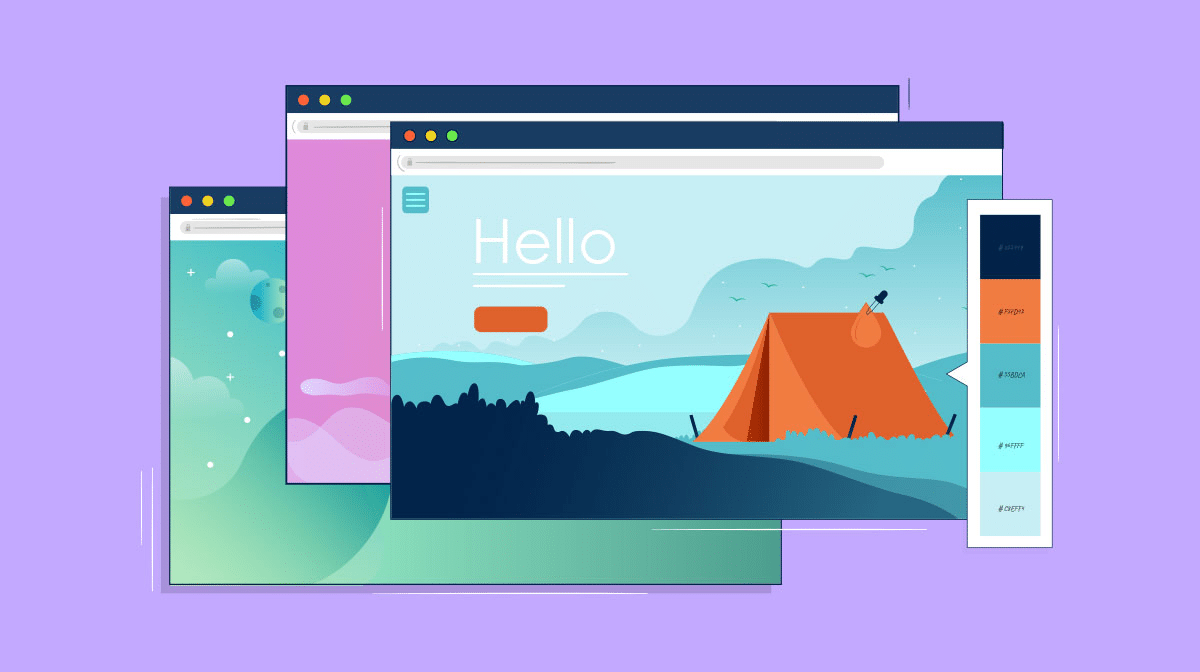The Birth of the Web: Exploring the First Website in 1991
In the wide and ever-changing world of the internet, it is crucial to understand and appreciate the beginnings of the World Wide Web. This is because the internet is constantly evolving. 1991 is a significant year in the history of the internet since it was the year that saw the establishment of the very first website ever in the history of the internet. The interconnected digital world that we are familiar with today was made possible as a result of this ground-breaking development.

The Genesis of the Web
Sir Tim Berners-Lee, a British computer scientist, is credited with being the originator of the story’s startling developments. Berners-Lee came up with the concept of a system that would enable researchers to easily share and access information in 1989, while he was working at CERN, which is the European Organization for Nuclear Research, which is located in Switzerland. His vision was not limited to just connecting computers; rather, it included the establishment of a platform for the collaborative exchange of information.
Berners-Lee and his colleague Robert Cailliau were the ones who worked on the implementation of this concept, which ultimately resulted in the development of the World Wide Web. It was with the intention of demonstrating the potential of this innovative system that the first website came into being. https://www.npr.org/2021/08/06/1025554426/a-look-back-at-the-very-first-website-ever-launched-30-years-later/
The Birth of the First Website
Despite the fact that it was not available to the general public at the time, the first website actually went live on December 20, 1990. CERN researchers were able to use it as a resource within the organization. Information regarding the World Wide Web project was made available on the website, along with instructions on how to develop web pages and configure web servers. If you were interested in exploring the content of this old website, the URL for it was http://info.cern.ch.
Although, by today’s standards, the content of the original website was somewhat simple, it was nonetheless significant in laying the groundwork for what was to come. On the website, there was textual information about the World Wide Web project, its objective, and the ways in which individuals may participate in this digital revolution. It acted as a manual for the development of the early web as well as for navigating it. https://diversewebsitedesign.com.au/our-recent-work/
The various sections that make up the initial website
Exploring the Content
In the initial section of the website, a full summary of the World Wide Web project was presented. The fundamental ideas that underpin the World Wide Web were discussed, with an emphasis placed on the function that the web plays in encouraging information sharing and collaboration among scholars.

Sections of the First Website
How to Create Your Own Web Page
The addition of a tutorial on how to create web pages was one of the innovative features of the very first website. The language that is used to structure material on the web is called Hypertext Markup Language (HTML), and this part provided instructions that were broken down into steps and laid out the fundamentals of HTML. One of the most important factors that contributed to the widespread adoption of the World Wide Web was the democratization of web building technology.
Putting Together Your Very Own Server
In the third segment of the website, various technical aspects of the process of establishing a web server were discussed in depth. In the early days of the World Wide Web, individuals were not only content consumers; they were also contributors and facilitators of content creation. Users were given the ability to run their own servers and build a presence on the internet through the use of this part.
The Impact and Legacy
The introduction of the very first website in 1991 signaled the beginning of a digital era that would fundamentally alter the ways in which we connect with one another, spread information, and conduct business. As a result of its ability to transcend geographical barriers and link people from all walks of life, the World Wide Web has become a phenomenon that is felt all around the world.
Technological Advancements
The establishment of the very first website was the catalyst that led to the future development of technological improvements. The technologies that powered the World Wide Web matured alongside the web itself. The World Wide Web has consistently pushed the limits of what was previously thought to be possible, beginning with the incorporation of graphic elements and progressing to the development of more complex computer languages.

The Rise of the Internet Economy
There is a direct correlation between the World Wide Web’s ability to allow accessibility and interconnection and the development of the internet economy. As a result of the proliferation of e-commerce, online services, and digital communication, industries underwent significant transformations, and new opportunities were made available to business owners and entrepreneurs.
Global Connectivity
It is possible that the role that the first website had in stimulating worldwide connectedness was one of the most significant consequences that it had. The internet evolved into a wide network that allowed for the free flow of information, ideas, and cultural expressions. As a result of this interconnection, the way in which we view and engage with the world has been altered, and conventional barriers have been broken down.
Conclusion
In 1991, at the Center for Energy Research (CERN), the first website was formed. It was a simple yet enormous accomplishment that laid the groundwork for the digital revolution. When Sir Tim Berners-Lee envisioned a connected society in which knowledge could be easily shared, his vision became a reality. As we make our way through the complexities of the modern web, it is imperative that we take a moment to contemplate the unassuming beginnings of a technology that has revolutionized every facet of our lives. The first website is not merely a remnant of the past; rather, it is a tribute to human ingenuity and the boundless possibilities that arise when we have the courage to dream of a better and more connected future.






